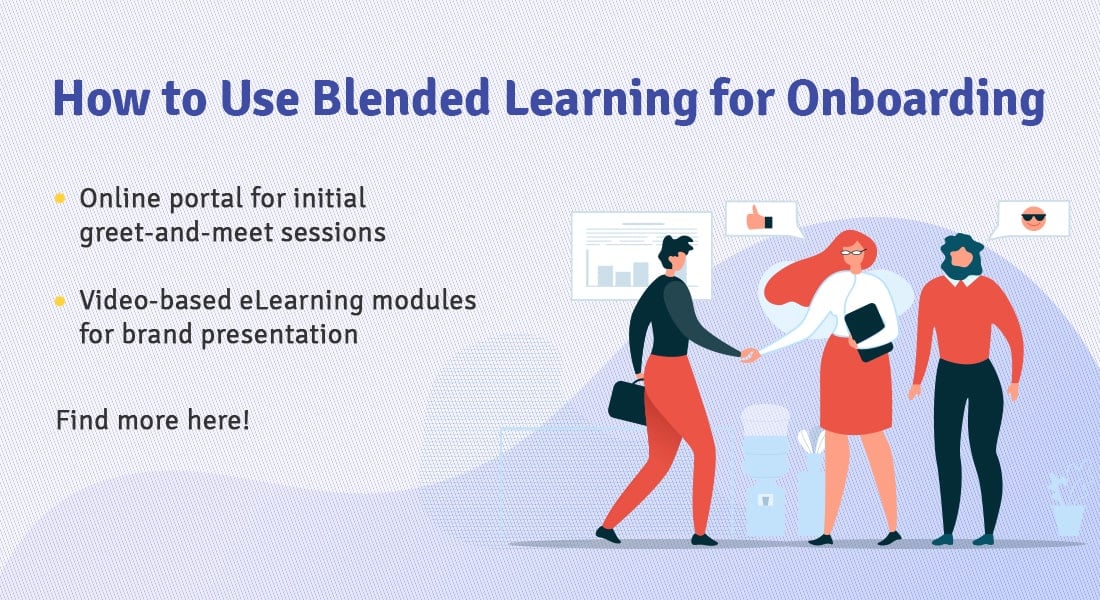Revitalize Your New Hire Training: Strategies to Combat Onboarding Fatigue

A well-structured onboarding process sets the stage for new hires to quickly become productive and integrated members of your team. Conversely, a poorly designed process can overwhelm new employees and quickly lead to disengagement and burnout. Unfortunately, onboarding fatigue is a common challenge, impacting retention rates and dampening the initial enthusiasm of new hires.
In this blog, we'll discuss the importance of an effective onboarding plan, the risks of onboarding fatigue, and five practical strategies your organization can deploy to create a more engaging, less stressful onboarding experience.
Trying to Combat Onboarding Fatigue?
Here are a few ways to do so -
- Pace the learning
- Make it interactive
- Emphasize mentorship and support
- Set realistic expectations
- Personalize the experience
Why Effective Onboarding Matters?
Onboarding goes far beyond the initial paperwork and HR introductions. It's a critical period where new hires:
- Form first impressions: These early moments shape their long-term perception of the company's culture and values.
- Build foundations: This is when they learn essential procedures, internal systems, and the expectations of their role.
- Start building relationships: Developing bonds with their team and mentors is crucial for feeling supported.
Successful onboarding has tangible benefits for your organization. Well onboarded employees are more likely to feel connected and invested, leading to higher retention and a solid onboarding plan gets new hires up to speed quickly. Also, when employees understand their roles and feel valued, they show higher levels of engagement.
The Challenge of Onboarding Fatigue
Onboarding fatigue occurs when new hires are bombarded with too much information, lack interactivity, feel isolated, and are burdened with unrealistic expectations. This can lead to:
- Overwhelm and burnout: Resulting in decreased motivation and energy.
- Poor knowledge retention: When the brain is overloaded, it struggles to process and retain crucial information effectively.
- Negative impressions: Fatigue erodes the initial excitement, leading to doubt about their decision to join the company.
- Increased turnover risk: Overwhelmed and frustrated employees are more likely to leave within their first year.
Common Causes of Onboarding Fatigue
- Information overload: Packing too much training into the first days or weeks without giving the employee time to digest the knowledge.
- Lack of engagement: Reliance on passive learning methods like lengthy documents, presentations, or videos without interactive activities. Here are a few strategies to enhance engagement.

- Overwhelming expectations: Assigning complex tasks too early, leading to frustration and a sense of inadequacy.
- Poor organization: Unstructured programs leave employees confused about priorities and who to turn to for help and direction.
- Isolation: Limited interaction with other team members contributes to a sense of disconnection.
→ Download Now: Onboarding through Exploration & Discovery [Case Study]
5 Key Strategies to Combat Onboarding Fatigue
1. Pace the Learning
Avoid the temptation to cram everything into the first few days. Use a phased approach to spread out onboarding information and responsibilities. This allows for better information absorption and reduces feelings of overwhelm.
- Prioritize the essentials: Identify the most critical skills and knowledge needed for the first few weeks.
- Chunk information: Break down complex topics into smaller, easily digestible modules, offering short breaks in between.
2. Make it Interactive
The traditional "sit and listen" model is a sure-fire recipe for fatigue. Increase engagement and knowledge retention with interactive learning experiences:
- Hands-on activities: Allow new hires to apply concepts with simulations, role-playing, or case studies.
- Q&A sessions: Encourage active participation and clarify any lingering confusion.
- Gamification: Incorporate elements of fun with quizzes, challenges, and rewards.
3. Emphasize Mentorship and Support
New hires shouldn't feel like they're navigating the onboarding process alone. Guidance and support make a significant difference:
- Buddy systems: Pair up new employees with a mentor for ongoing help and social connections.
- Regular check-ins: Schedule regular progress meetings with their manager to address questions and offer feedback.
- Open channels: Encourage two-way communication where the new hire can easily ask for help without hesitation.
4. Set Realistic Expectations
Avoid overwhelming new hires with complex tasks and high-pressure timelines early on. Clarity around objectives and workload will prevent burnout and build confidence.
- Start with smaller tasks: Break down projects into manageable components and provide support resources.
- Celebrate milestones: Acknowledge progress and small wins to boost motivation.
- Communicate priorities: Help them understand what is urgent and what can be tackled later.
5. Personalize the Experience
Every employee learns differently and has unique needs. Customizing the onboarding process will make it more engaging and relevant. Consider:
- Learning styles: Offer options such as videos, written materials, or hands-on experiences to cater to different learning preferences.
- Prior experience: Assess the new hire's existing skills and tailor training to avoid redundancy.
- Feedback: Regularly collect feedback from new hires to improve the onboarding experience further.
Technology to Ease the Onboarding Burden
Leverage technology to streamline the onboarding process and enhance the new hire experience:
- Learning Management Systems (LMS): Centralize training materials, quizzes, and progress tracking. Here are a few LMS platforms you can get started with -

- Video and eLearning modules: Make information accessible for self-paced learning anytime.
- Virtual communication tools: Enable easy interaction between new hires, colleagues, and managers, especially in remote work settings.
- HR chatbots: Provide quick answers to common onboarding questions 24/7.
How to Navigate the Onboarding Journey? [Video]
Wrapping Up!
A thoughtful onboarding experience is not merely an HR exercise. It's a strategic investment that makes new hires feel valued, contributing to long-term success. By understanding the causes of onboarding fatigue and using the strategies outlined, you can create a welcoming, engaging environment that sets your new employees up for both immediate and long-range wins.
Ready to launch successful onboarding journeys? Download our FREE Case Study: "Onboarding through Exploration & Discovery" and see the power of onboarding software in action!





